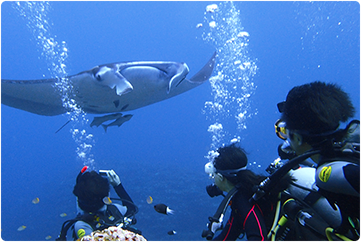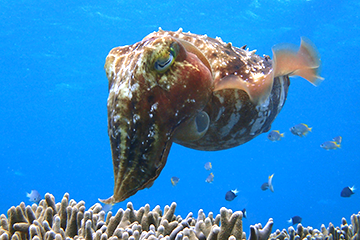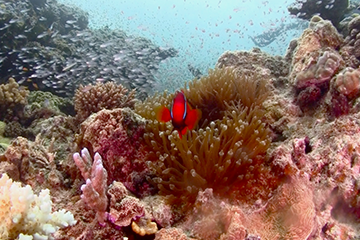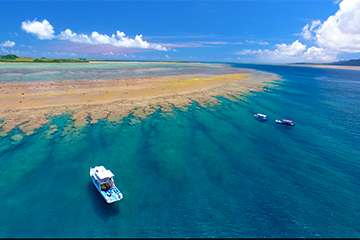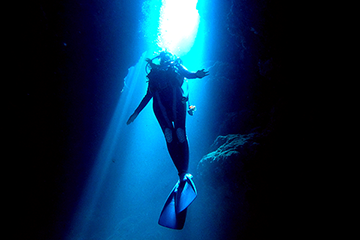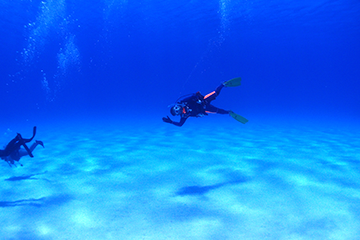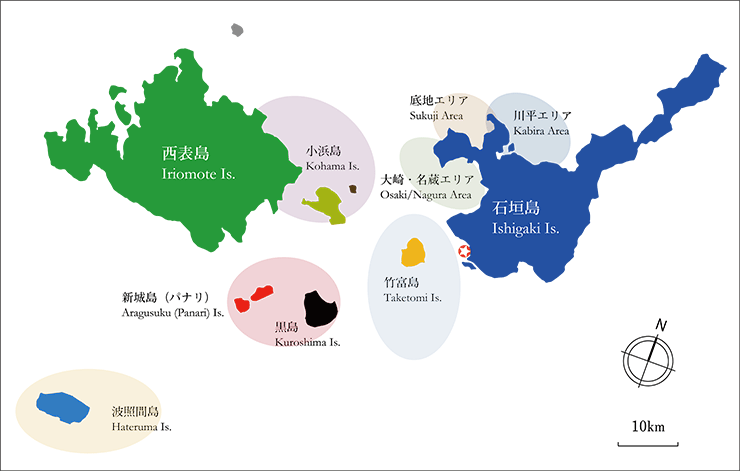
Ishigaki Island is the most popular diving destination in Japan. When the surrounding islands such as Iriomote and others are included, the variety of diving is among the best in the world. Iriomote-Ishigaki National Park – where the world-famous Kabira Manta Point is located – is the southernmost national park in Japan, and it has plenty to see both in the ocean and on land.
There are many different types of dive sites on Ishigaki and nearby islands, from shallow to deep, with or without currents, and can be enjoyed by beginners and experienced divers alike.
Prime Scuba Ishigaki is located near the city center of Ishigaki and provides diving services around Ishigaki and surrounding islands, including Iriomote, Kuroshima, Panari, and sometimes as far as Hateruma island.
Kabira Manta Point (8-20m depth)
Ishigaki Island has some of the best dive sites in the world for encountering manta rays, most notably in the Kabira area in the northwestern part of the island. The best season to visit is from May to October, as northerly winds make access difficult in the winter.
Manta rays come to this area to have their bodies cleaned by small fish, so you can see them gracefully migrating over the cleaning stations where there are small fish. In manta-watching dives, we wait for and watch mantas at the cleaning station for the entire dive.
For diving at manta points of Ishigaki, we are required to follow multiple local rules in order to protect mantas (no touching, no chasing, etc.). When diving at these points, please follow our instructors’ instructions.
Sukuji area (depth 10 – 30m)
Sukuji Bay is located directly to the west of Kabira manta point. Its general tranquility makes it a perfect place for relaxing diving and lunch.
The area has a shallow sand bottom and reef points that go beyond 30m underwater. Square-spot fairy basslet may be spotted around 25m. Enjoy relaxing dives with a beautiful curtain of sunshine.
Osaki/Nagura area (depth 5 – 30m)
Located on the west of Ishigaki island, in between the city port and Kabira area. On the map above, it looks like a big mouth of Ishigaki.
There are so many colorful fishes such as goldies and purple queens. In spring, giant cuttlefishes come to this area and lay eggs in between the coral branches. Nagura Bay is also famous for the world’s third largest pavona clavus, a type of coral. There are many unique gobies at some deep points, and you will probably see a school of batfish.
Taketomi Island area (depth 5 – 40m)
One of the closest islands to the Ishigaki city port, Taketomi island is also one of the most popular visitor points for those who visit Ishigaki (only a 20min ferry ride).
There are many dive points around Taketomi Island. Watch garden eels swinging their bodies and feed, or millions of glass fishes around corals. Enjoy the reefs, and sometimes a school of tunas come to pass by. In the winter, you should stop by underwater hot springs to keep your body warm!
Kohama Island/Iriomote Island area (depth 5 – 30m)
Iriomote Island (population 2,500) is the largest island of Yameyama. It is known for rare animals such as the Iriomote Wildcat or Crested Serpent Eagle, both of which are nationally protected.
There are a variety of dive points for this area – some reefs, some caves, some sand, and a reck diving point. You may find millions of small cardinal fishes in the cave showing us a group dance. Also, if you are lucky, you may spot manta rays on their way to Kabira manta point
Kuroshima / Aragusuku Island (Banari) area (depth: 7 – 30 m)
Kuroshima (population 220) is a heart-shaped island located southwest of Taketomi. It is known for growing cows, and there are 10 times more cows than people. Aragusuku, also known as Panari (meaning annex in the local language), consists of two small islands.
This area is known for relatively high water visibility throughout the year. Many small reefs are spread around on white sand and provide homes for small creatures. You can find longnose hawkfish at 7m deep. As the name of one of the dive point “Therapy” suggests, this is an area where you just want to melt your soul in the relaxing world of the Kuroshima Ocean.
Hateruma area (depth 10 – 30m)
About 1.5 hours from Ishigaki, Hateruma (population 500) is the southernmost island of Japan that civilians can visit every day. The name “Hateruma” came from “Hate no Uruma”, meaning the remote island of Ryukyu (Okinawa).
As it is a bit far from Ishigaki, access is limited on days with good ocean conditions (best around the rainy season of May). Hateruma’s blue water, however, is something that you should see once in your lifetime. River of fusiliers, tunas, turtles, napoleon fishes, etc… If the condition is good and you get a chance, it is worth trying for extra time and cost.

